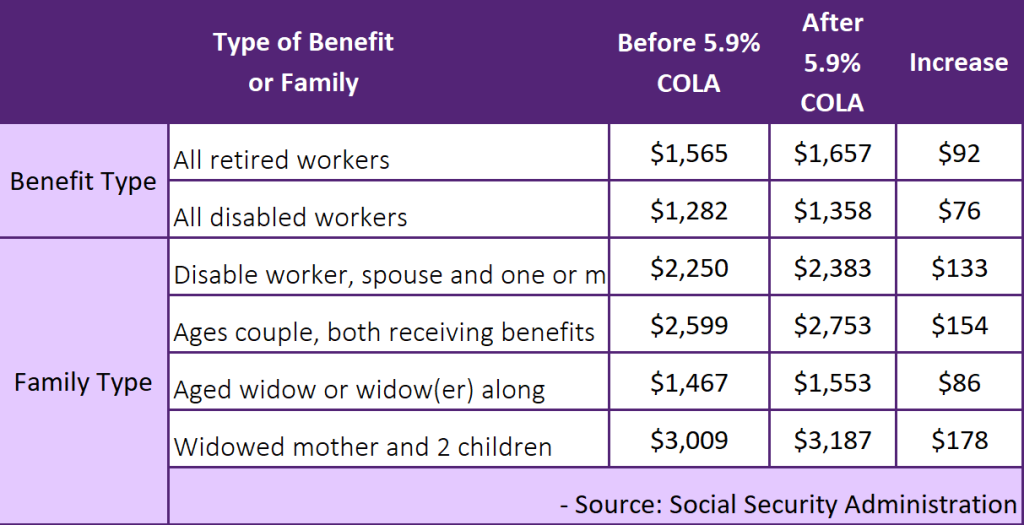
Changes to Social Security Benefits and Taxes
The Social Security Administration recently announced some changes to benefits and taxes for 2022. First, the wage base for computing Social Security tax will increase from $142,800 to $147,000. Also, the cost-of-living adjustment (COLA) is getting a rather substantial bump from 1.6% in 2020 and 1.3% in 2021, to 5.9% in 2022.
More on the Increased Social Security wage base
The Federal Insurance Contributions Act (FICA) imposes two taxes on employers, employees, and self-employed workers — one for Hospital Insurance, which is commonly known as the Medicare tax, and the other for Old Age, Survivors and Disability Insurance, commonly known as the Social Security tax.
There’s a maximum amount of compensation subject to the Social Security tax, but no maximum for Medicare tax. For 2022, the FICA tax rate for employers is 7.65% — 6.2% for Social Security and 1.45% for Medicare (the same as in 2021).
2022 updates
For 2022, an employee will pay:
- 6.2% Social Security tax on the first $147,000 of wages (equating to a maximum tax of $9,114), plus
- 1.45% Medicare tax on the first $200,000 of wages ($250,000 for joint returns; $125,000 for married taxpayers filing a separate return), plus
- 2.35% Medicare tax (regular 1.45% Medicare tax plus 0.9% additional Medicare tax) on all wages exceeding $200,000 ($250,000 for joint returns; $125,000 for married taxpayers filing a separate return).
For 2022, the self-employment tax imposed on self-employed taxpayers is:
- 12.4% OASDI on the first $147,000 of self-employment income (maximum tax of $18,228); plus
- 2.90% Medicare tax on the first $200,000 of self-employment income ($250,000 of combined self-employment income on a joint return, $125,000 on a return of a married individual filing separately), plus
- 3.8% (2.90% regular Medicare tax plus 0.9% additional Medicare tax) on all self-employment income exceeding $200,000 ($250,000 of combined self-employment income on a joint return, $125,000 for married taxpayers filing a separate return).
What happens in the case of more than one employer?
If an employee works for your business and has a second job, each employer must withhold Social Security taxes from the individual’s wages. Unfortunately, the employee cannot ask one employer to stop withholding Social Security tax once he or she reaches the wage base threshold for his or her combined income. However, the employee will get a credit on his or her tax return for any excess withheld.
Increased Social Security Benefits
Each year, the Social Security Administration evaluates the Consumer Price Index to ensure that the purchasing power of benefits is not eroded by inflation, modifying the cost-of-living adjustment (COLA) as needed. The COLA amount for 2021 was 1.3% and for 2020, it was 1.6%.
For 2022, the COLA will increase to 5.9%. The chart below shows the estimated average monthly Social Security Benefits.
We can help
Contact us if you have questions about payroll tax filings or payments. We can help ensure you stay in compliance.




